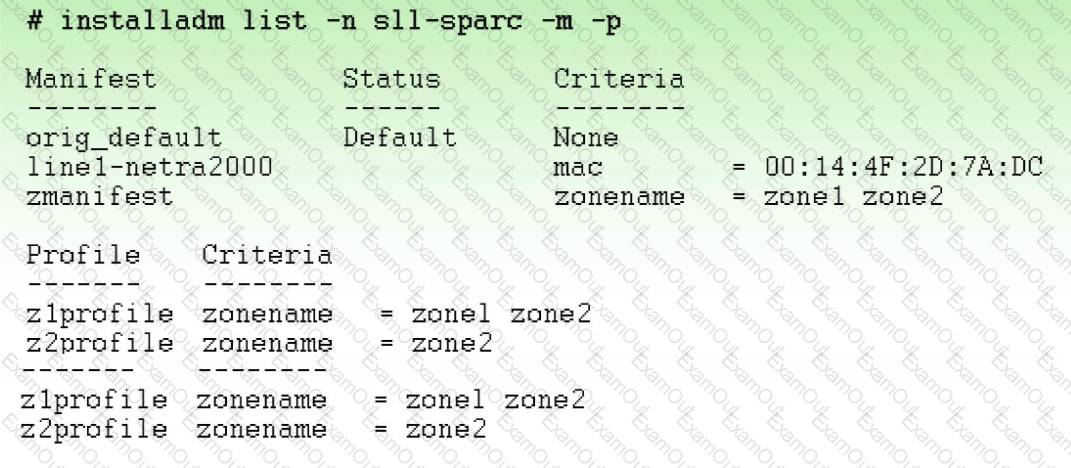The COMSTAR framework provides support for the iSCSI protocol.
Identify three true statements describing the COMSTAR framework. (Choose three.)
View the Exhibit

You executed the command on the Automated Installer (AJ) install server.
Select the three options that describe the information in the Exhibit. (Choose three.)
You create a flash archive of the Solaris 10 global zone on the server named sysA. The archive name is s10—system flar, and it is stored on a remote server named backup_server.
On sysA, you create a Solaris 10 branded zone named s10-zone.
You want to use the flash archive, located on /net/backup_servers/10-system.flar, to install the operating system in the s10-zone zone.
Which command do you choose to install the s10-system flar archive in the Solaris 10 branded zone (s10-zone)?
The current ZFS configuration on your server is:
pool1200K3.91G31K/pool1 pool1/data31K3.91G31K/data
Your backup policy states that you are to perform a full backup of /data on Sunday and incremental backups on Monday through Saturday. Each incremental will back up only the data that has been created or modified since the Sunday backup was started The file systems must be available to users at all times and the data will be backed up to tape.
Which option should you choose for the Wednesday backup?
You need to set up a local package repository to serve 75 client systems. Multiple clients will being the package repository concurrently and you need to ensure that the local repository performs very well under this heavy load, especially during package intensive operations.
Which option would ensure the best performance of the repository during package-intensive rations by multiple clients?
The ZFS configuration on your server is:
Pool1 6.67G31K/pool
Pool1/data31K31K/data
Select the three commands that you would use to 1. Create, 2. List, and 3. Delete a snapshot of the /data file system.
You want to deploy oracle Solaris 11 with the automated installer (AI). You need to make sure that your server and network meet the requirements for using AI.
Choose the three options that describe; the requirements for using AI.
Review the zpool information on your server:

You enabled the deduplication properly on the pooH/data file system, yet the information on the pool shows a DEDUP RATIO of 1 00x. Which two options describe why the data duplication ratio on pooM still shows I.OOx and not a higher value? (Choose two.)

